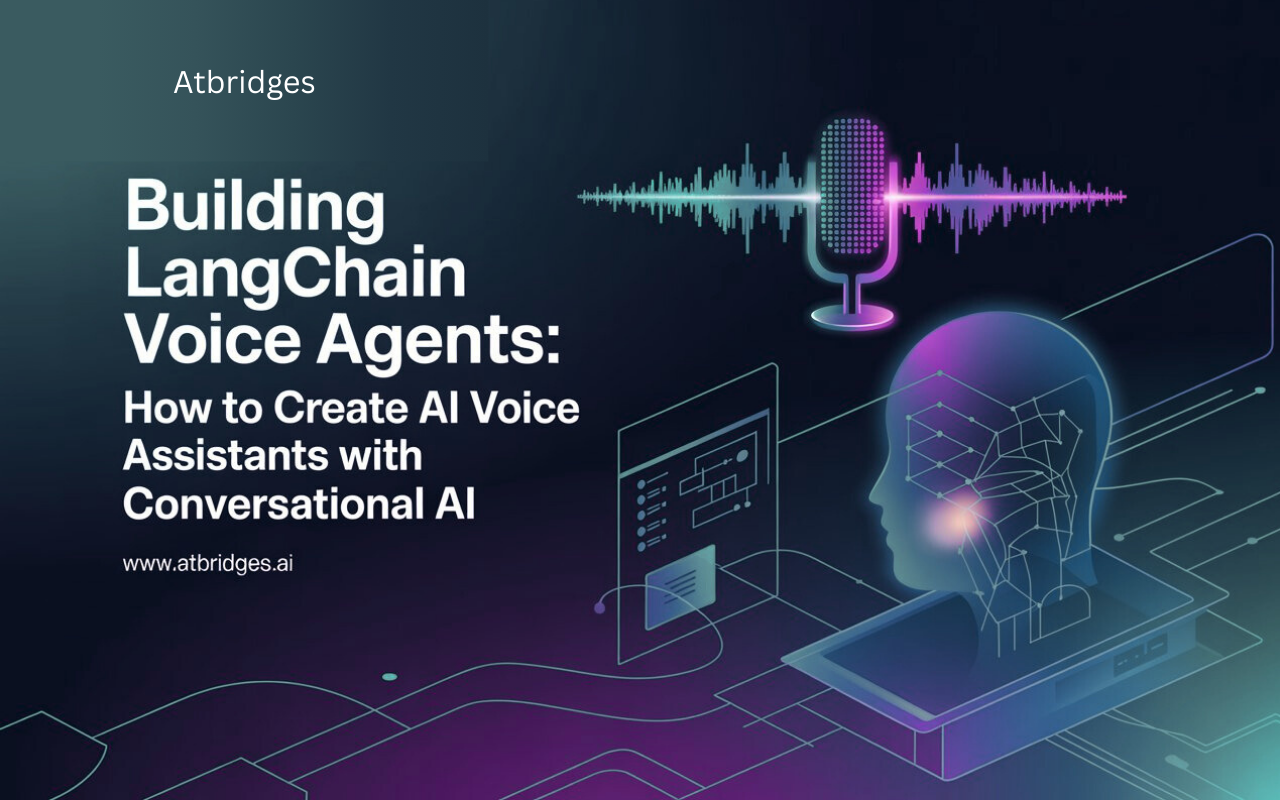How to Create AI Voice Assistants with Conversational AI

In today’s fast-paced digital world, voice AI is becoming the most natural interface between humans and technology.
From Alexa and Siri to customer support bots, people increasingly expect seamless, conversational, and hands-free experiences. But building advanced voice agents that go beyond simple question-answering requires powerful frameworks and that’s where LangChain voice agents come in.
LangChain has quickly become one of the most popular frameworks for creating AI-powered conversational systems by making it easier to connect Large Language Models (LLMs) with real-world data and tools. When combined with speech-to-text (STT) and text-to-speech (TTS), LangChain empowers developers to build AI voice assistants that are intelligent, context-aware, and capable of handling complex tasks.
What is a LangChain Voice Agent?
A LangChain voice agent is an advanced AI voice assistant that uses:
- Speech-to-Text (STT): Converts spoken language into text. (e.g., OpenAI Whisper, Google Speech, Deepgram)
- LangChain Orchestration: Processes the text input, uses memory, reasoning, and external tools to generate the right response.
- Text-to-Speech (TTS): Converts the generated response back into natural-sounding voice. (e.g., ElevenLabs, AWS Polly, Azure TTS)
Together, this creates a full conversational loop where users can interact with a LangChain conversational AI just like they would with a human.
Why Use LangChain for Voice Agents?
- Memory and Context Handling: LangChain enables AI voice assistants to remember past exchanges, making conversations more natural.
- Tool Integration: LangChain voice agents can connect with APIs, databases, CRMs, or calendars. For example, a customer support bot built with LangChain can pull up account details or schedule appointments.
- Speech-to-Text & Text-to-Speech Flexibility: You can choose the best STT/TTS provider (Whisper, ElevenLabs, AWS Polly) to optimize voice AI quality.
- Scalable Conversational AI: Perfect for enterprises looking to scale customer support voice bots or healthcare assistants.
Architecture of a LangChain Voice Agent
Here’s a high-level flow of how a LangChain conversational AI works in a voice AI pipeline:
User Speech → Speech-to-Text (STT) → LangChain Agent
→ Reasoning + Tools + Memory
→ Text Response → Text-to-Speech (TTS) → Spoken Reply
Key Components:
- LLM Backbone: GPT, Claude, Gemini, or LLaMA
- LangChain Agent: Handles prompts, tool calls, memory, and reasoning
- Voice Layer: STT + TTS for natural audio interactions
- Integration Layer: APIs, databases, enterprise apps
Use Cases for LangChain Voice Agents
- Customer Support Bots
- Build LangChain customer support bots to handle inbound calls
- Automate troubleshooting and FAQs
- Escalate complex issues to human agents
- Healthcare Voice Assistants
- Book telehealth appointments with LangChain voice agents
- Answer patient queries through AI voice assistants
- Ensure HIPAA-compliant conversational workflows
- Sales & Lead Qualification
- Automate cold calls or follow-ups
- Qualify leads before handing them to reps
- Update CRM in real-time with LangChain conversational AI
- Smart Devices & IoT
- Create AI voice assistants for home automation
- Deploy LangChain voice agents for factory and industrial IoT
- Enable hands-free dashboards and controls
Tech Stack for Building LangChain Voice Agents
- Backend: FastAPI or Flask
- LangChain Conversational AI: Core agent logic (memory, reasoning, tools)
- STT (Speech-to-Text): OpenAI Whisper, Deepgram, Google Speech API
- TTS (Text-to-Speech): ElevenLabs, AWS Polly, Azure TTS
- Database: PostgreSQL, Chroma, or Pinecone for memory and KB
- Deployment: Docker, AWS Lambda, or Replit
Challenges & Best Practices
- Latency: Real-time voice AI requires low-latency STT/TTS and caching.
- Voice Naturalness: Choose TTS engines like ElevenLabs for lifelike AI voice assistants.
- Context Switching: Use LangChain’s memory to avoid confusion in customer support bots.
- Security: Encrypt all voice data for compliance (HIPAA, GDPR).
Future of LangChain Voice Agents
As LLMs get faster and more multimodal, LangChain voice agents will evolve into real-time, multilingual conversational AI systems. From customer support bots to enterprise AI voice assistants, the next big leap is making voice AI more human-like, empathetic, and context-aware.